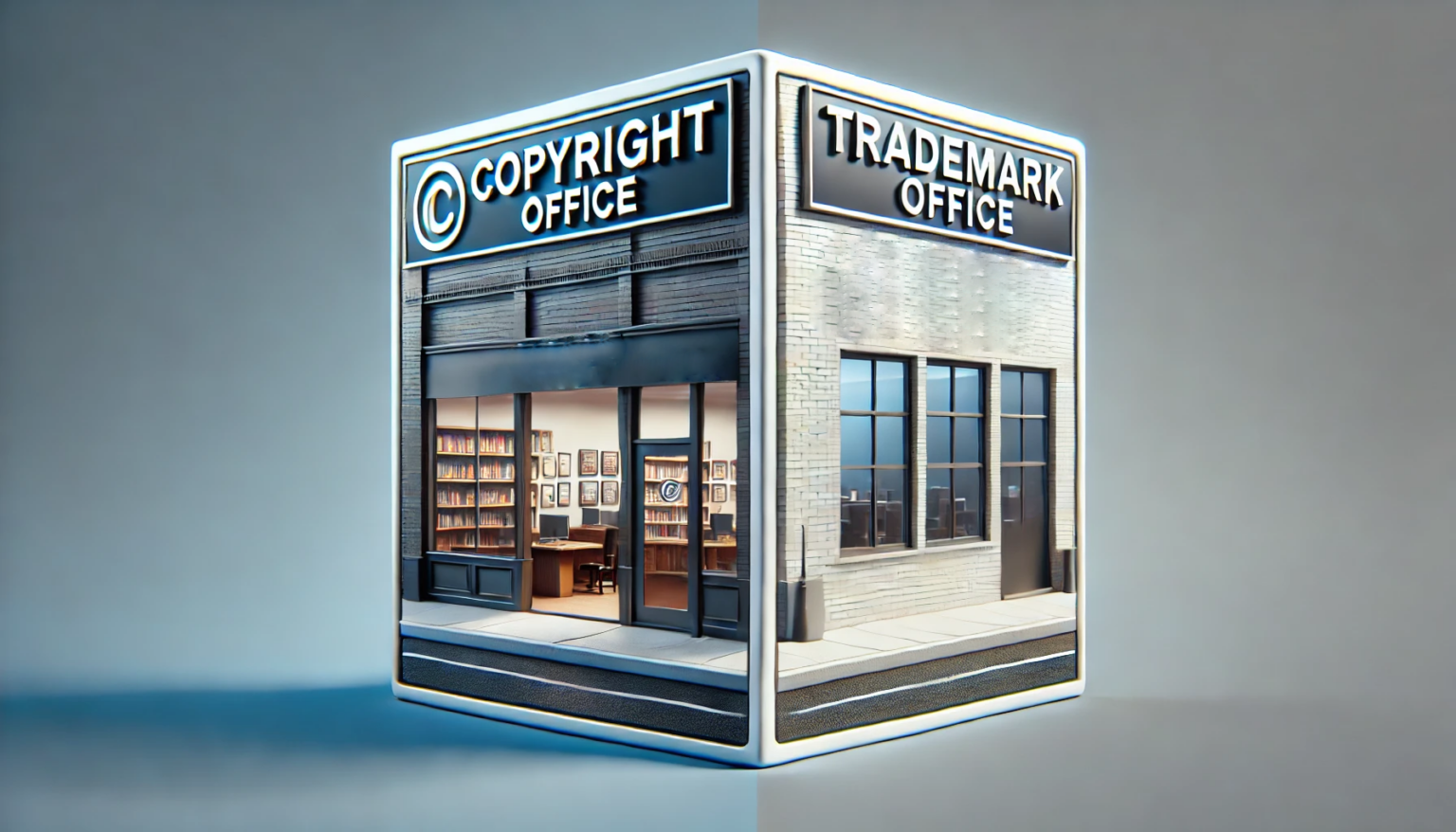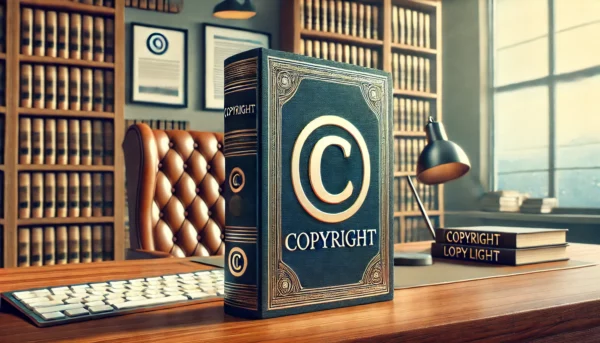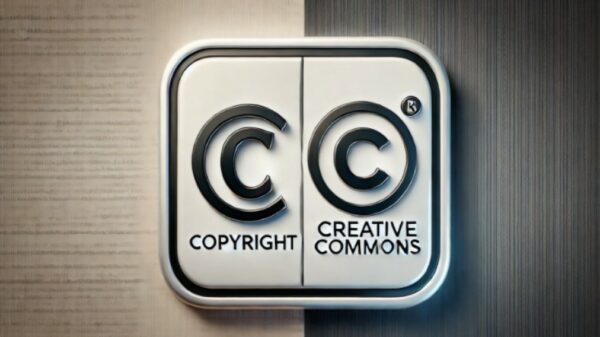In the intricate world of publishing and content creation, authors navigate a sea of creative expressions, ideas, and brand identities. At the heart of this navigational challenge lies a fundamental understanding of two critical legal concepts: copyright and trademark. These pillars of intellectual property law not only safeguard the fruits of an author’s labor but also define the boundaries of creative freedom and commercial identity. For authors, the distinction between copyright and trademark is not merely academic; it profoundly influences how their works are created, shared, and protected.
This article aims to help demystify these concepts, focusing specifically on their relevance and application to authors. We will explore the essence of copyright and trademark, their importance in the literary domain, and the implications they hold for an author’s creative and commercial endeavors. By delving into the nuances of these legal frameworks, authors can better navigate the complexities of intellectual property rights, ensuring their works are both safeguarded and respected in the broader literary landscape.
Understanding Copyright vs Trademark for Authors
In the realm of intellectual property, copyright and trademark stand as two fundamental protections, each with distinct roles and implications for authors. Understanding the nuances of these protections is crucial for authors to navigate the legal landscape of publishing and branding.
Copyright
Copyright is a form of protection granted to the creators of “original works of authorship,” which encompasses a wide range of creative expressions including literary works, movies, music, and software. For authors, copyright automatically attaches the moment a work is fixed in a tangible medium of expression, such as being written down or recorded. This protection does not cover ideas, facts, or systems, but rather the specific way in which these are expressed. Copyright affords authors the exclusive rights to reproduce, distribute, perform, display, and create derivative works from their original creations, thus offering a shield against unauthorized use and allowing authors to control how their works are disseminated and adapted.
Your Publishing Journey Awaits – Start NowTrademark
Trademark, on the other hand, serves as a marker of origin and quality, safeguarding words, phrases, symbols, or designs that identify and distinguish the source of goods or services. For authors, trademarks might encompass book series titles, character names, or even distinctive cover designs that, when recognized by the public, become synonymous with the author’s name or brand. Unlike copyright, trademark protection requires formal registration for the highest level of protection, particularly on a federal level, and is maintained through consistent and distinctive use in commerce. Trademarks do not expire as long as they are in use and properly defended against infringement.
Both copyright and trademark are integral components of intellectual property, a legal domain that ensures creators can benefit from their inventions and expressions while fostering an environment where creativity and innovation can flourish. For authors, these protections not only secure their rights to their works and identities but also enable them to build and maintain their brand, ensuring that their unique voices and creations are recognized and respected in the marketplace. Understanding and effectively utilizing copyright and trademark protections are essential for authors to safeguard their intellectual contributions and establish a lasting legacy in the literary world.
Copyright Protection for Authors
Copyright is a form of intellectual property protection granted to the creators of “original works of authorship,” including literary, dramatic, musical, artistic, and certain other intellectual works, both published and unpublished. Central to copyright protection is the concept that the work must be expressed in a tangible form—be it written on paper, saved on a computer drive, recorded, or otherwise captured in a way that it can be perceived, reproduced, or communicated. This means ideas, methods, or systems are not copyrightable until they are expressed in a fixed medium.
The scope of copyright protection is quite broad; it gives the copyright owner exclusive rights to reproduce the work, prepare derivative works, distribute copies, and perform or display the work publicly. Copyright law, however, does acknowledge certain limitations and exceptions to these rights, such as fair use, which allows for limited use of copyrighted material without permission for purposes like criticism, commentary, news reporting, teaching, scholarship, or research.
Obtaining Copyright Protection
Obtaining copyright protection does not require a formal registration process in many jurisdictions, as copyright protection is automatic upon the work being fixed in a tangible form. However, registering a copyright with the copyright office, such as the United States Copyright Office, provides the copyright owner with additional legal benefits. These benefits include the legal presumption of ownership in federal court and the eligibility to claim statutory damages and attorney’s fees in litigation.
The process involves submitting a completed application form, a filing fee, and a nonreturnable copy or copies of the work to be registered. Upon registration, the work is assigned an official copyright registration number, and the copyright symbol ©, along with the year of first publication and the name of the copyright owner, may be used to indicate the work’s copyright status.
Understanding the nuances of copyright protection enables authors to safeguard their creative endeavors, ensuring they maintain control over their works and can defend against unauthorized use.
Trademark Protection for Authors
Trademarks serve as a key tool for authors in protecting elements central to their professional identity and the commercial aspect of their work. Unlike copyrights, which protect the content of the works themselves, trademarks safeguard symbols, names, phrases, logos, and other identifiers that distinguish the goods or services of one entity from those of others. For authors, this can include the name under which they publish, series titles, character names with commercial value, and logos or branding used in the marketing of their books.
Your Publishing Journey Awaits – Start NowThe importance of trademark protection in the literary world cannot be overstated. A well-established trademark becomes synonymous with the author’s quality and style, helping to build a loyal readership. Trademark infringement, where unauthorized parties use a mark confusingly similar to a registered trademark, can dilute an author’s brand, mislead readers, and divert revenues. Holding a registered trademark empowers authors with legal protections to enforce their rights against such infringements effectively. This includes the right to bring an action concerning the trademark in federal court and potentially recover damages.
Obtaining a Trademark
The process of trademark registration involves several steps, starting with a comprehensive search to ensure the desired mark is not already in use for related goods or services. Authors can conduct this search using the Trademark Electronic Search System (TESS) available on the website of the United States Patent and Trademark Office (USPTO) or their respective national trademark office. Following a successful search, the author applies the Trademark Electronic Application System (TEAS), detailing the mark and the specific goods or services it will represent.
The application is then reviewed by an examining attorney for compliance with trademark laws. If approved, the mark is published in the Official Gazette, allowing others an opportunity to oppose the registration. Absent any successful opposition, the trademark is registered, granting the author significant legal advantages in protecting their brand identity. This registered status, symbolized by the ® sign, serves as a public declaration of the author’s exclusive rights to the mark in connection with the goods or services listed in the registration.
Intellectual Property Protection Strategies
Protecting intellectual property (IP) is paramount for authors to safeguard their creative and commercial interests. One fundamental strategy involves understanding and utilizing the legal protections available under IP law, such as copyrights for literary works and trademarks for branding elements. Proactively registering these rights can offer a legal presumption of ownership, an invaluable asset in disputes. Moreover, authors must demonstrate sufficient use of their trademarks in commerce to maintain their protection, ensuring these marks remain associated with their unique goods or services.
Equally important is the development of a consistent and unique brand. Authors should strive to create a distinctive brand identity that resonates with their audience, making their work instantly recognizable. This not only aids in building a loyal readership but also in preventing potential infringements. Consistency in branding across all platforms and publications helps to reinforce the author’s market presence, making it easier to defend against unauthorized use. Ensuring that branding elements like logos, series titles, and character names are sufficiently unique reduces the risk of confusion and strengthens the overall brand, providing a solid foundation for both copyright and trademark protections.
Navigating the Trademark and Copyright Offices
The United States Patent and Trademark Office (USPTO) plays a pivotal role in the realm of intellectual property, administering federal trademark registrations and serving as a resource for copyright information. While the USPTO does not handle copyright registrations, which are overseen by the Copyright Office within the Library of Congress, it is instrumental for trademarks. Obtaining a federal trademark through the USPTO enhances an author’s legal standing, providing nationwide protection and a public record of ownership.
For a successful navigation through both offices, authors should heed the following tips:
- Comprehensive Research: Before filing a trademark application, conduct a thorough search using the USPTO’s Trademark Electronic Search System (TESS) to ensure your proposed mark does not conflict with existing trademarks. For copyrights, checking existing registrations can clarify the uniqueness of your work.
- Clear and Accurate Application: Ensure your application is meticulously filled, clearly describing the work or mark and its use. For trademarks, specify the classes of goods or services accurately.
- Appropriate Filing Fees: Both processes require filing fees, which vary based on the specifics of the application, such as the number of classes in a trademark application. Be prepared to pay these fees promptly to avoid delays.
- Follow Guidelines: Adhere strictly to the submission guidelines provided by each office. For copyright, this includes submitting the correct form and a non-returnable copy of your work. For trademarks, this involves selecting the correct basis for filing and providing a specimen showing the mark as used in commerce.
Navigating the copyright and trademark offices with these strategies in mind can smooth the path to securing your intellectual property rights, ensuring your creative and commercial assets are well-protected.
Legal Challenges and Solutions
Authors often navigate a complex landscape of legal challenges, with copyright infringement, trademark infringement, and unauthorized use of their work being prevalent issues. Copyright infringement occurs when someone uses an author’s protected work without permission, while trademark infringement involves the unauthorized use of a mark that is identical or confusingly similar to a registered trademark, potentially misleading consumers. Unauthorized use can also encompass a broader spectrum of violations, including misusing characters, plot elements, or proprietary terms outside the bounds of fair use or without proper licensing.
Seeking Professional Legal Help
In confronting these challenges, seeking professional legal help is crucial. A trademark lawyer or patent attorney specializing in intellectual property can provide invaluable assistance, offering expert guidance on protection strategies, navigating the complexities of registration, and enforcing rights. These professionals can also represent authors in legal proceedings, negotiate settlements, and advise on compliance with copyright and trademark laws to avoid inadvertent infringements.
The role of the federal court in these matters is significant. For cases involving copyright and trademark disputes, federal courts have jurisdiction, offering a formal venue for resolving such conflicts. Having a registered copyright or trademark can afford authors certain legal presumptions and advantages in court, underscoring the importance of formal registration and legal protections. These protections not only deter potential infringers but also provide a mechanism for recourse, including the possibility of securing damages for unauthorized use.
Your Publishing Journey Awaits – Start NowUltimately, navigating the legal challenges inherent in the literary world demands a proactive approach to intellectual property protection and a willingness to seek expert advice. By leveraging the legal protections available and engaging with the judicial system when necessary, authors can defend their creative works and commercial interests, ensuring their intellectual property remains safeguarded.
Incorporating Artificial Intelligence
The integration of Artificial Intelligence (AI) into the management of intellectual property rights, particularly in the copyright and trademark realms, offers a transformative approach for authors. AI can significantly streamline the process of protecting creative content, from initial copyright acquisition to ongoing monitoring for potential infringements. By leveraging AI technologies, authors can automate the assessment of their works’ originality, facilitate the completion and submission of necessary registration documents, and conduct efficient online surveillance for unauthorized use of their content.
Spines
In this evolving digital environment, there are innovative solutions aimed at assisting authors in securing their copyrights more seamlessly. For instance, Spines is an AI-powered publishing platform that simplifies the publishing process by offering a suite of services tailored to the needs of modern authors. From book cover design and audiobook production to editing and formatting, Spines ensures a streamlined publication process, allowing authors to swiftly bring their books to market within 30 days.
Among its comprehensive services, Spines also aids authors in obtaining copyrights for their works. After your book has been uploaded authors will receive a free copyright protection certificate, something that usually costs between $50-$120, further smoothing the transition from manuscript to published book. Sign up for free to start exploring what Spines has to offer.
Conclusion
Understanding the distinctions and intersections between copyright and trademark is crucial for authors in safeguarding their creative and commercial assets. Copyrights protect the expression of ideas, while trademarks secure the symbols and names that represent an author’s brand. Navigating these legal frameworks effectively ensures that authors maintain control over their work and its use in the marketplace. Authors are encouraged to proactively engage with these intellectual property protections, seek professional advice when necessary, and leverage modern technologies like AI to streamline the process. Taking these steps empowers authors to focus on their creative endeavors with the confidence that their intellectual property is secure.
FAQ’s
Q1: What is the main difference between copyright and trademark?
A1: Copyright protects original works of authorship like books, music, and art, focusing on the content itself. Trademark, on the other hand, protects symbols, names, and slogans used to identify goods or services, focusing on brand identity and preventing consumer confusion.
Q2: Can an author trademark their pen name or book title?
A2: Yes, authors can trademark their pen names and book titles if they are used to signify a brand in the marketplace. For a book title to be trademarked, it typically needs to be part of a series or have some commercial branding use beyond just the single book.
Q3: Is copyright registration required for protection?
A3: Copyright protection is automatic upon the creation of a work in a tangible medium. However, registering your copyright with the Copyright Office can provide legal advantages, such as eligibility for statutory damages and a legal presumption of ownership.
Q4: How long does copyright protection last?
A4: In the United States, copyright for works created after January 1, 1978, lasts for the life of the author plus an additional 70 years. For works with multiple authors, the term is 70 years after the last surviving author’s death.
Q5: How do I register a trademark, and how long does it last?
A5: To register a trademark, you must apply with the appropriate trademark office, such as the USPTO in the United States, demonstrating the use of the mark in commerce. Trademark registration can last indefinitely, provided you continue to use the mark in commerce and file the necessary maintenance documents.
Q6: What is the process for dealing with copyright or trademark infringement?
A6: If you believe your copyright or trademark has been infringed, it’s advisable to consult with an intellectual property attorney. Legal actions can include cease and desist letters, negotiations, or filing a lawsuit. Remedies may include damages, injunctions, and recovery of legal costs.
Q7: Can I use copyrighted material without permission?
A7: Using copyrighted material without permission may be permissible under certain conditions, such as fair use, which allows for limited use for commentary, criticism, news reporting, teaching, and research. However, fair use is a complex legal doctrine, and what constitutes fair use can vary by case.
Q8: What is the significance of the © and ™ symbols?
A8: The © symbol is used to denote copyright ownership and is typically accompanied by the year of first publication and the copyright owner’s name. The ™ symbol indicates that a mark is being claimed as a trademark for goods or services, even if not yet registered. Upon registration, the ® symbol may be used.
Q9: Can AI tools help in the copyright and trademark registration process?
A9: Yes, AI tools can assist in various aspects of the registration process, such as conducting preliminary searches for existing copyrights or trademarks, filling out application forms, and monitoring for potential infringements, streamlining the process for authors and creators.
Your Publishing Journey Awaits – Start Now






